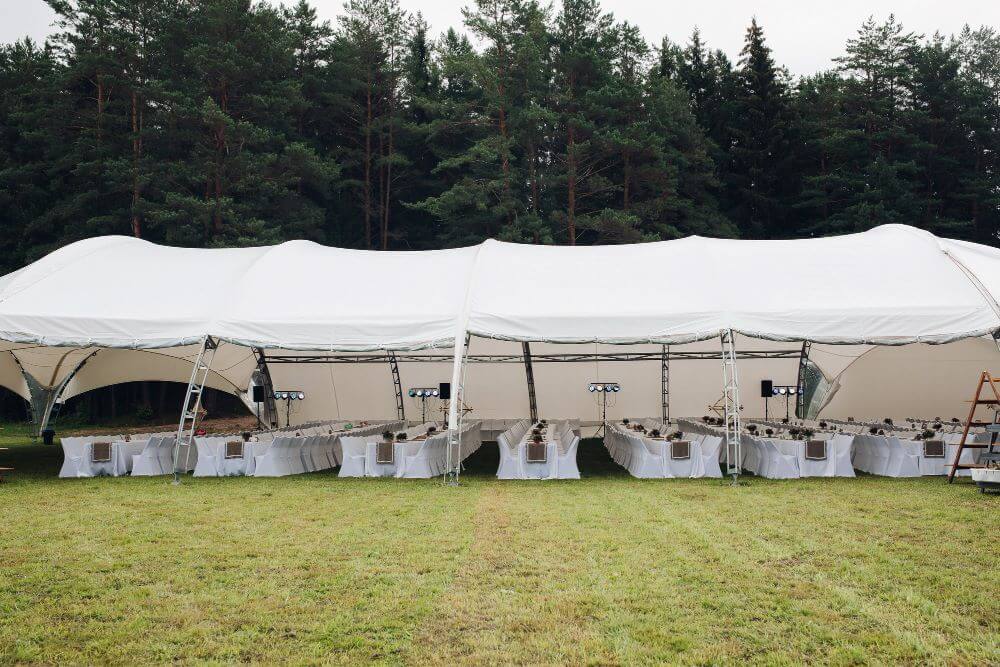Fabric structures have become a cornerstone in modern construction due to their remarkable versatility, cost-effectiveness, and the speed at which they can be pitched. These structures, often referred to as fabric buildings, are composed of a durable fabric membrane stretched over a rigid frame, typically made from steel or aluminum. The result is a lightweight yet robust structure that can be widely used across numerous industries.
This article explores the ways fabric structures are used in construction. Keep reading to learn more.
1. Fabric Structures In Harsh Environments
One of the most significant advantages of fabric structures is their adaptability to various environmental conditions. In regions prone to harsh winters, such as the northern parts of North America, fabric buildings are engineered to endure heavy snow loads, ensuring they remain functional throughout the year. This capability is particularly crucial for industries that rely on continuous operations, where any downtime due to structural failure could result in significant financial losses.
Fabric buildings are especially advantageous in environments where traditional construction materials and methods may not be suitable. For example, in remote areas where transporting heavy construction materials would be costly and time-consuming, fabric buildings offer a practical material handling alternative. Their lightweight nature allows them to be transported and assembled quickly, even in challenging locations. Additionally, these structures can be designed to handle specific snow load requirements, making them reliable in regions with extreme winter conditions.
2. Tension Fabric Structures for Versatile Applications
Tension fabric structures are a specialized subset of fabric buildings that offer unique benefits. The fabric in these structures is tensioned, meaning it’s pulled tight over the frame, creating a robust and stable structure that can span large areas without internal support. This design makes them particularly well-suited for applications requiring vast, unobstructed interior spaces, such as storage facilities or sports arenas.
One of the critical features of tension fabric structures is their ability to provide ample natural light within the interior. The translucent fabric allows sunlight to permeate the space, reducing the need for artificial lighting during daylight hours. This creates a copacetic atmosphere while contributing to energy savings, making these structures an environmentally friendly choice.
Moreover, tension fabric structures can be customized to include various features such as insulation and HVAC systems. Their ability to adapt renders them appropriate for multiple climates and uses, ranging from temporary storage solutions to permanent industrial establishments. Whether used for agricultural purposes, such as housing livestock or for storing sensitive equipment, these structures provide the necessary protection while maintaining a controlled interior environment.
3. The Industrial Application of Fabric Buildings
Due to their durability and cost-effectiveness, fabric buildings have found a broad array of uses in industrial settings. They’re frequently utilized in industrial settings where conventional structures would be prohibitively expensive or unfeasible. For instance, many companies use them as equipment storage facilities, where large machinery and vehicles can be securely housed.
One critical consideration for the industrial application of fabric structures is their ability to withstand external forces, such as wind and snow. Fabric buildings are designed to meet specific snow load requirements, ensuring they remain safe and operational even in regions with severe winter conditions. This makes them an ideal choice for industries located in the colder parts of North America, where maintaining the integrity of the structure during winter is crucial.
Another industrial sector application of fabric buildings is temporary or semi-permanent workspaces. These structures can be erected quickly, providing immediate shelter for ongoing projects or temporary storage needs. Their ability to be dismantled and relocated with ease adds to their appeal, especially for companies that require flexibility in their operations.
4. The Role of Fabric Buildings in Storage Solutions
Storage facilities are one of the most common applications of fabric buildings. Their spacious interiors and customizable designs make them suitable for various storage needs. Whether for agricultural products, construction materials, or equipment storage, fabric buildings offer a solution that combines security with ease of access.
For example, farmers in rural areas often use fabric buildings as grain storage facilities. The structures protect the grain from the elements while providing ample ventilation to prevent spoilage. Similarly, construction companies use these buildings to store materials such as lumber, steel, and other supplies, keeping them dry and ready for use.
The ability to span large widths without internal support is clearly beneficial in storage facilities. Structures that are several feet wide can accommodate large equipment and vehicles, making it easy to store and retrieve items as needed. This makes them a practical choice in industries such as mining, where large-scale machinery needs to be stored when not in use.
As fabric structures continue to evolve, they offer increasingly viable and sustainable alternatives to traditional construction methods. Whether in harsh environments or specialized industrial applications, these versatile buildings meet diverse needs with efficiency and durability.
5. Advancements in Fabric Structure Technology
The technology behind fabric structures has advanced significantly in recent years, leading to even more durable and efficient designs. Innovations in fabric materials have resulted in more substantial and weather-resistant buildings that can be tailored to specific environmental conditions. For instance, fabrics with enhanced UV resistance are now available, extending the lifespan of the structure in areas with intense sunlight.
Furthermore, the integration of modern HVAC systems into fabric buildings has made them suitable for even more applications. These systems ensure that the interior environment remains comfortable and conducive to the specific needs of the occupants, whether it’s maintaining a stable temperature for equipment or providing a comfortable working environment for employees.
Conclusion
Fabric buildings have become indispensable in modern construction and industrial operations across North America and beyond. With technological innovations advancing, their role in various industries is likely to expand even further. With their adaptability, energy efficiency, and resilience, fabric structures represent the future of construction and storage solutions, providing a reliable and sustainable option for businesses and communities alike.

